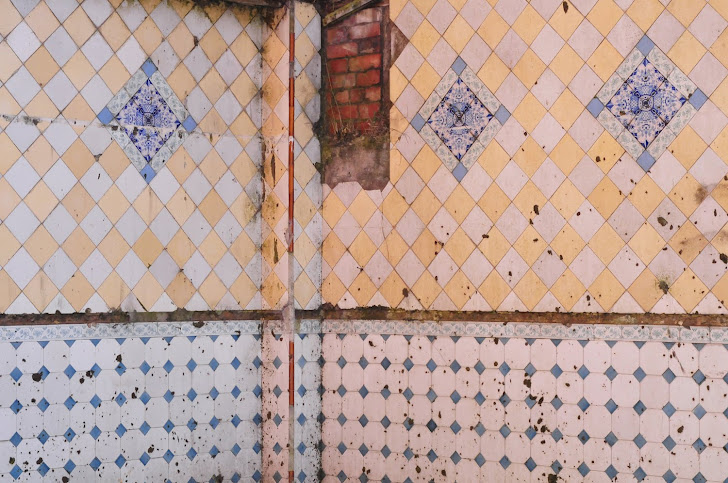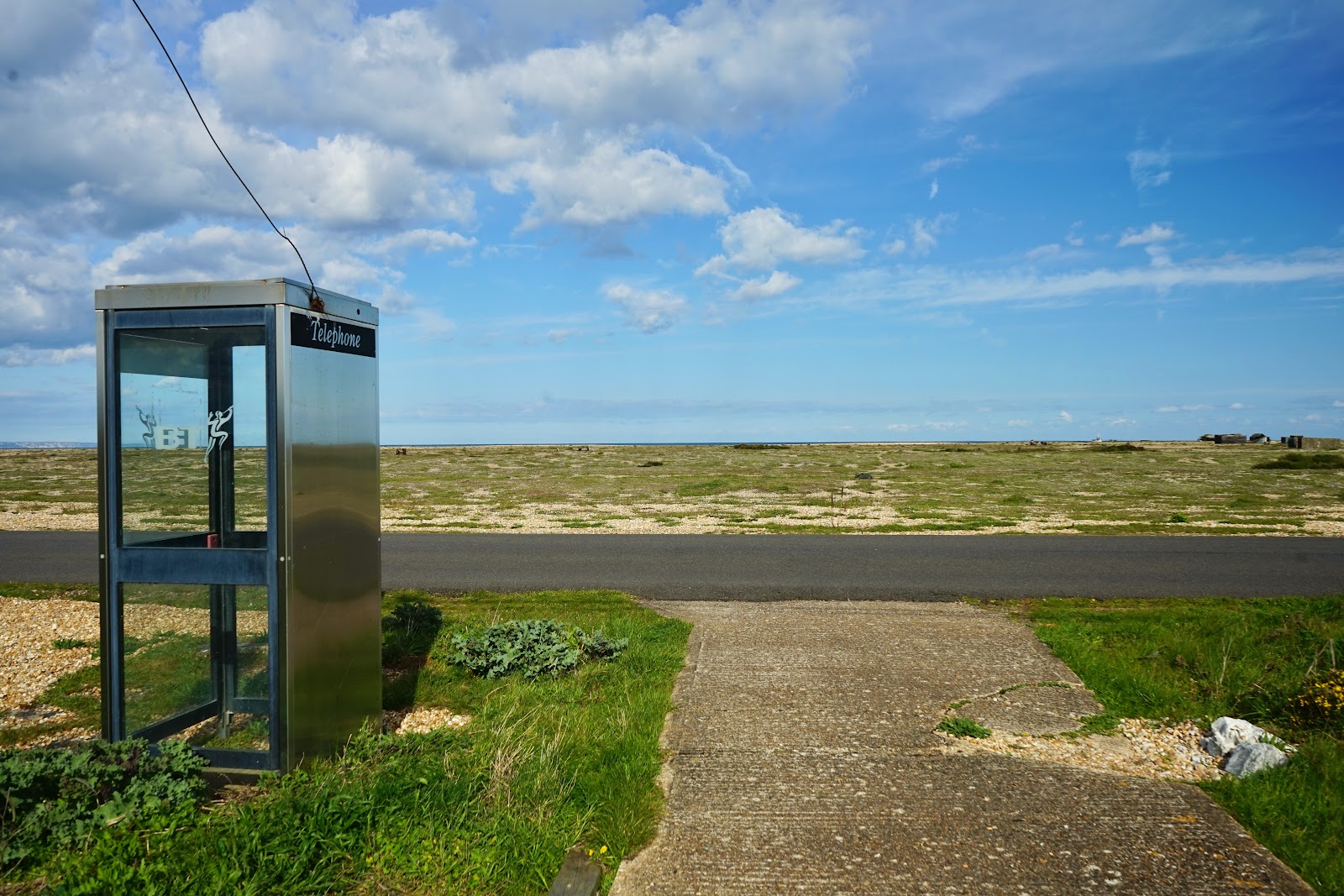Tata Steel Co., Shap, Cumbria.
Eyelevel Photography
City spaces: texture, traces and change by John Robertson.
Tuesday, 17 September 2024
Shap, Worthing & Preston
Monday, 26 August 2024
Dungeness, Kent.
Through a camera you can frame a jumble of pylons, low buildings, a lighthouse and a power station. Small innocuous homes sit like compact, self sufficient huts out of season.
One of the few black cottages has thick yellow window frames and a borderless garden belonging to the artist and film maker Derek Jarmen, now kept and overseen by his partner.
The shingle merges with the garden, without a border to speak of. The garden and the landscape beyond it casts a spell which was difficult to articulate, something about it being both bleak and beautiful. How do plants and animals survive at the edge of this otherworldly lunar-esque dimension? The wilderness of the place helped it become an SSSI, a site of special scientific interest. The only boundaries seem to be the few roads.
At the time of our visit I got out the car and marvelled at the distant horizon, where large ships could be spotted and in the foreground, weather battered boats lay up on shingle. A large rusted tank rests along with other skeletal detritus. Walking in the distance, a visitor, with their partner trailing behind.
Friday, 3 April 2020
In the Frame #1 Robert Frank
Years ago I saw the film 'The Pledge', directed by Sean Penn. I wrote (and re-wrote) this as a response to a detail.
In The Frame
It implies a darker or a foreboding psyche behind a country that prides itself with freedoms and opportunity. It hints that things are not what they seem. When you consider the passion from Americans regarding their constitution and all that their flag stands for, it becomes a much more powerful image, not just because that some people are shrouded in some kind of secrecy or mystery, but that there are other more powerful people who control that narrative. Sean Penn chose to recreate it within a parade scene in his directorial crime mystery ‘The Pledge’ from 2001, starring Jack Nicholson.
A flash of the image appears as we follow our detective into the crowds as the height of the film’s atmosphere intensifies. It’s brilliantly placed as it feels like it fits the film’s pace. Was Penn’s intention to rework the imagery into the film to provoke, or evoke something, or is it simply a homage to the great photographer? It’s possible that it’s all these points. What’s certain is that it’s a reminder of the power of visual imagery and for almost 20 years after the film was released, that particular image continues to ask questions about who the Americans were, who they are now, and what they really want to be.
Thursday, 13 February 2020
Changed Space. APRIL 2020
a) a car park
b) student accommodation or luxurious/professional accommodations
c) generic new offices (to let)
d) umm...a car park
Change has also arrived at Vernon's Lodge; a fishing pit, central to the land that merges with Penwortham and Lostock Hall. To this day, there's the mystery of rusted green pipework that sits above a concrete platform with an opening facing the fishing pit. Something existed before, but what?
"About time, the factory's been closed fifteen year and they only knocked it down twelve month ago. I'm just waiting for the right pay out. We should get that and another house." He lived behind a row of houses which are to be part of the redevelopment. The houses on Sunny Bank, right next to where the factory was are still there. "Oh yeah, people are still living in them. They be waiting as well, till the time is right."
Wednesday, 5 February 2020
Avenham. A full circle.
Monday, 26 May 2014
The changes that are due are taking their time since the developers and interested parties involved want to close small local shops in order to 'fill gaps' (ie, the grotty wastelands and small businesses that hinder progress in favour for the proposed supermarket - that will need the entire area to develop a flow towards its own centre). Since looking at the project in 2010 the complicated case continues to today (May 2014). I interviewed small businesses in the area and they all said the same thing. The Council developers had 'no idea', they wanted leading developers to take over and they also wanted the area completely changed to favour larger developers, instead of including existing shops: basically they wanted to capitalise on the whole zone rather than modify a working community where regeneration was desperately needed. The near by iconic bus station was also connected to these plans. they were going to demolish that, move it elsewhere and dissolve the current routes etc, but that plan dissolved - that's when the Council got in flap and fluster...
 Once the enormous John Lewis pulled out of the doomed 'Tithebarn Project', the major sponsors basically said to leading Councillors 'you don't really know what you want do you - I'm out'.
Once the enormous John Lewis pulled out of the doomed 'Tithebarn Project', the major sponsors basically said to leading Councillors 'you don't really know what you want do you - I'm out'.The new plan supermarket WILL be built. But at the moment this ghostland continues to be...
Locked gates

Bridge at Vernon's

Percy St, Preston

Once: a social club
Church St tiled walls

Wasteland



















